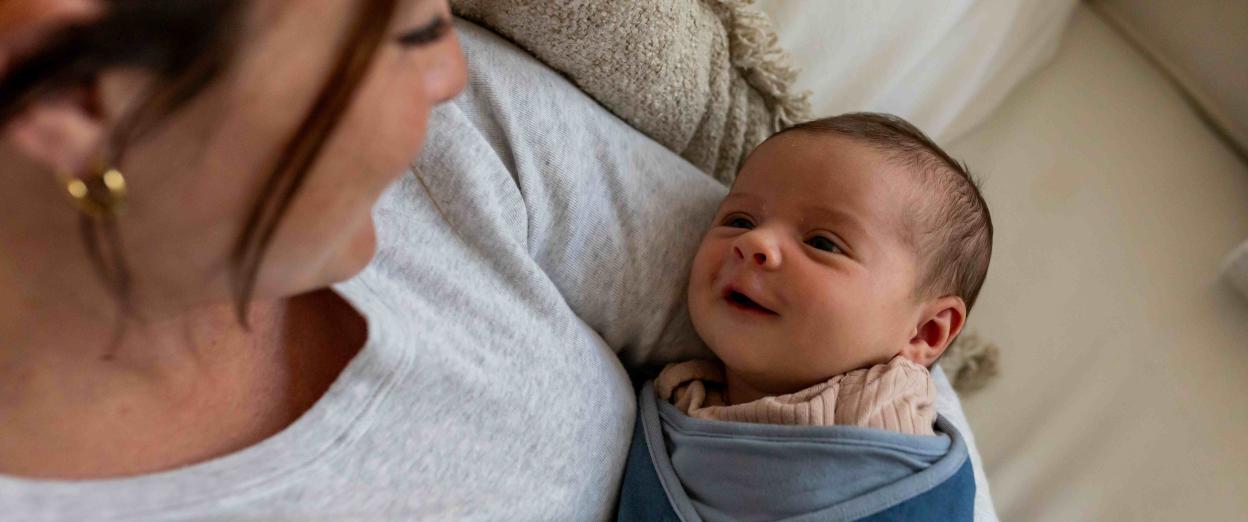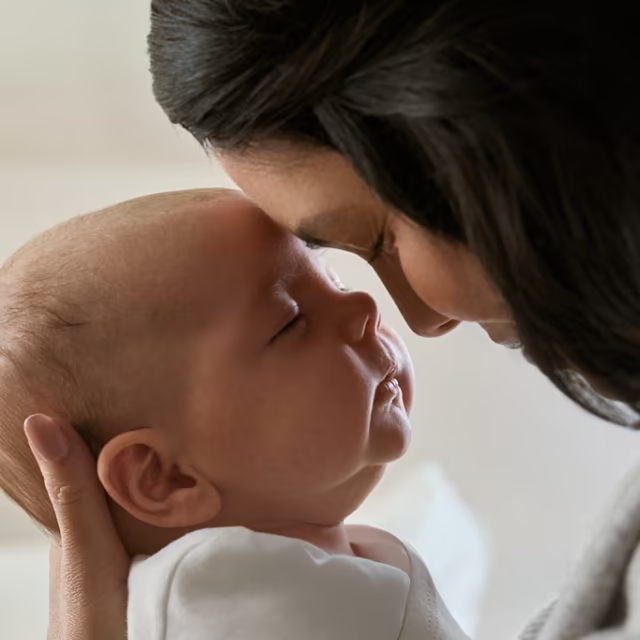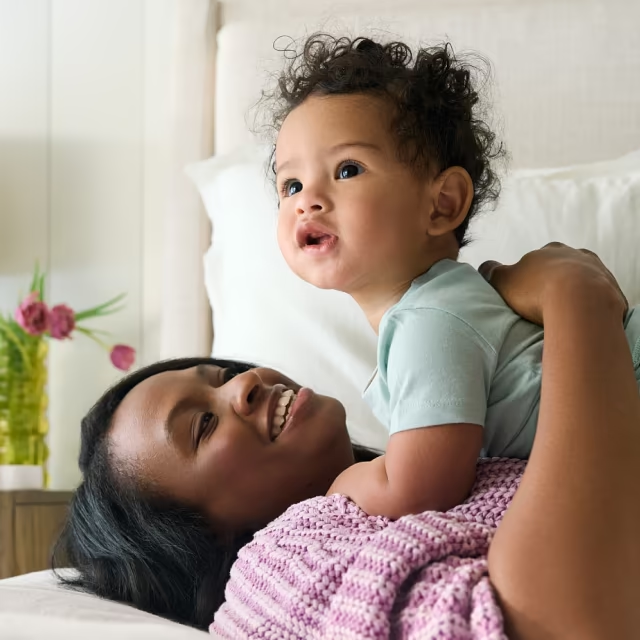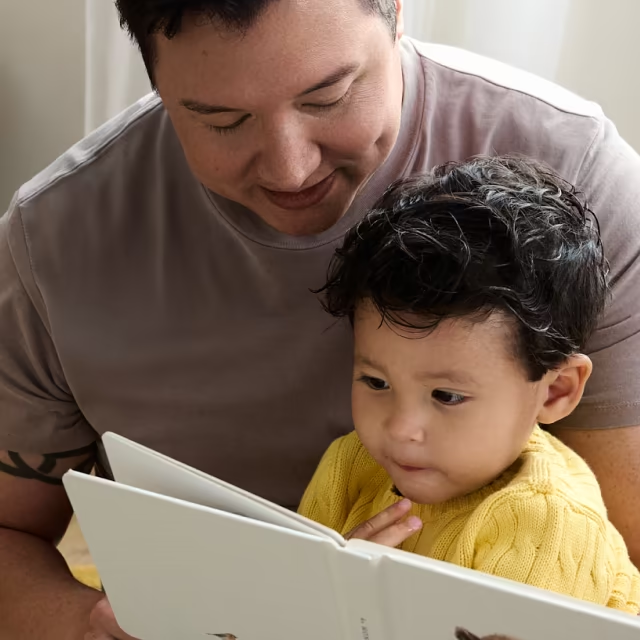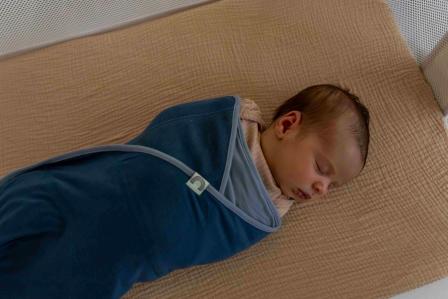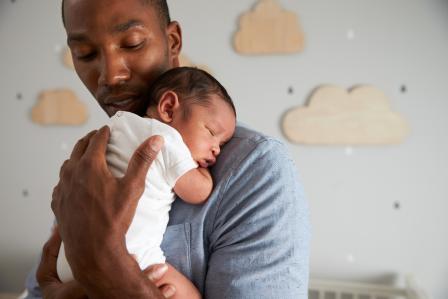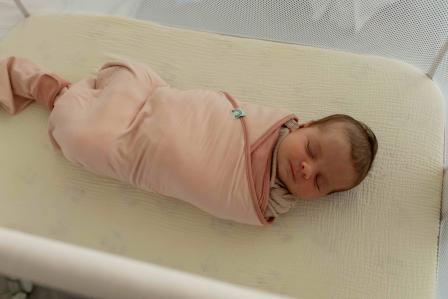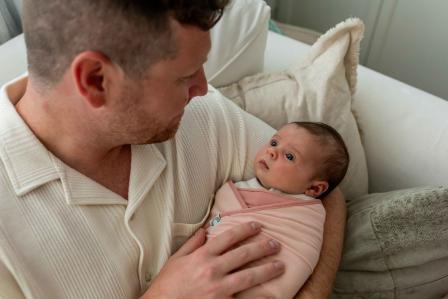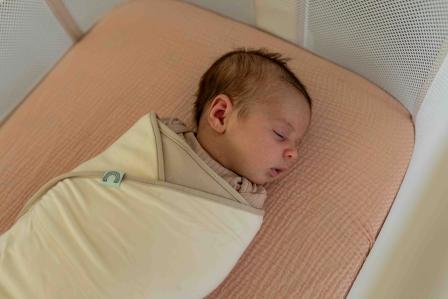I love swaddles for newborns. They can be a powerful tool to help a newborn sleep better at night. But what if your baby hates the swaddle? Let's talk about why your baby is fighting the swaddle, what to do to help, and how to help babies who seem to hate the swaddle.
I know that sometimes babies actually cry harder after they’re swaddled. In this case, it’s the tools you use in combination with the swaddle that makes the difference. That’s why the b.e.s.t. swaddle comes with a free mini class that will show you how to turn your swaddle hater into a swaddle lover.
Why does my baby fight the swaddle?anchor
Fighting or breaking free from the swaddle is often a sign of very active sleep. This is completely normal for newborns.
Newborns go through two different sleep cycles: quiet sleep and active sleep.(1) Active sleep for newborns is similar to REM sleep for adults, but there is one big difference. For adults, our skeletal muscles are paralyzed during REM sleep. This is not the case for newborns. Swaddling helps limit flailing so they won’t startle themselves awake.
Your baby could also be fighting the swaddle because they’re overtired. Pay attention to your baby’s sleepy cues and wake windows to prevent your baby from being overtired.
Signs your baby doesn’t want to be swaddledanchor
Let’s talk about signs that your baby is fighting the swaddle or doesn’t want to be swaddled.
Your baby is consistently breaking out of the swaddle. If your baby is able to get one or both arms out of the swaddle almost daily, first double check that your baby is swaddled safely and correctly. If your baby is still able to break out even after being swaddled correctly, it may be time to transition out of the swaddle. As babies get older and their strength and mobility increases, they often want to be able to move more freely in the crib.
Your baby is really fussy every time you swaddle them. You can expect to see some fussiness at times when you swaddle, especially if it’s later in the day or if your baby is overtired. It’s often what comes after the swaddle that makes the biggest difference! If you have the b.e.s.t. swaddle, be sure to check out your free mini class for all of the strategies you need to turn your swaddle hater into a swaddle lover.
Your baby no longer has the Moro reflex. The Moro reflex typically lessens and eventually disappears between 3-6 months. This is also the time when your baby starts to move more independently. When the Moro reflex is no longer disruptive to sleep, your baby may be ready to drop the swaddle.
If your baby is showing any of these signs, be sure that you check out my tips for how to help when your baby fights the swaddle.
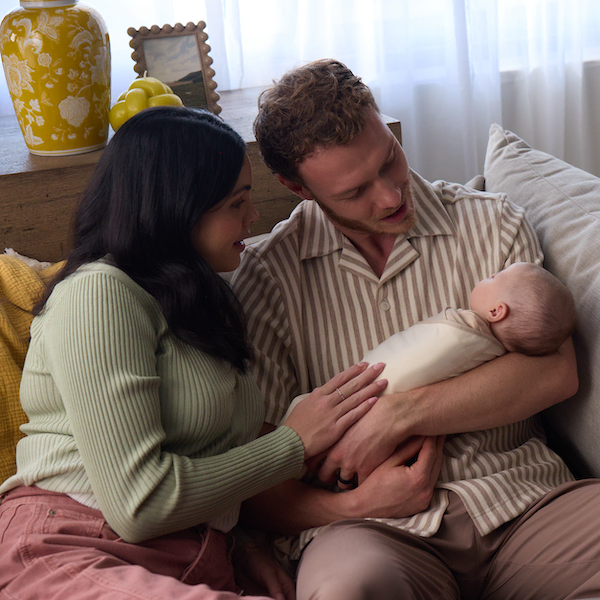
Newborn Sleep Bundle
stars ( reviews)
In my newborn class, I’ll show you all of my best tips for swaddling, including what to do if it seems like your baby never wants to be swaddled. And I’ll also teach you how to lay a healthy sleep foundation, schedule your day with a realistic flexible routine and get longer stretches of sleep at night (with or without a swaddle) so you can love the newborn stage.
Learn MoreWhat do I do if my newborn hates being swaddled?anchor
Swaddle them anyways. Let me explain: Babies who fight the swaddle are often the ones who need the snug feeling of the swaddle the most.
Here's why I recommend swaddling, even for swaddle haters:
Newborns are used to the snug, compact feeling of the womb. Swaddling provides the same feeling of security and comfort to your baby as when you were carrying them.
Swaddling also helps with the Moro reflex. Some people refer to the Moro reflex as the startle reflex because it looks like your baby is being startled. Have you seen your baby fling out their arms as if they are falling? This is the Moro reflex. Swaddling helps calm this reflex and allows for a more restful sleep.
Also, the American Academy of Pediatrics published a study that found swaddling truly provides a comforting, secure feeling to newborns.(2) The study stated that full-term infants cried less when swaddled compared to other soothing techniques, and that “swaddling can soothe pain in infants.” For premature infants, swaddling results in “improved neuromuscular development, less physiologic distress, better motor organization, and more self-regulatory ability.” Did you catch that? Swaddling calms babies, soothes pain, and actually supports their development.
I know that there are times when some babies actually cry harder after they’re swaddled. When that happens, it’s the tools you use in combination with the swaddle that makes the difference. The b.e.s.t. swaddle comes with a free mini class that will show you how to help your baby love the swaddle.
Tips for when babies fight the swaddle:anchor
Start swaddling when both you and your baby are calm. It will make it easier for you both since your baby can pick up on any nervous, anxious energy.
Keep practicing with your baby. Sometimes it takes a bit of time before you get it right.
Try the free mini class that comes with the b.e.s.t. swaddle. I’ll show you my best tips for calming a fussy baby and teach you how to turn your swaddle hater into a swaddle lover. Sometimes, it really is what comes AFTER the swaddle that makes the biggest difference.
Expert tip: If you have stopped swaddling because your newborn seemed to hate it, it’s okay to go back to swaddling as long as your baby isn’t showing signs of rolling.
How do I swaddle my baby? anchor
Swaddling correctly plays an important role in both seeing all of the calming benefits of the swaddle and ensuring that your baby is safe. Check out my blog “How do I swaddle my baby?” where I give you step-by-step guidance on how to swaddle and ways to be sure that your baby is swaddled safely.
My newborn wants their hands out of the swaddle. Is this ok? anchor
I know it may seem like your newborn wants their hands out the swaddle or maybe even that your baby hates the swaddle, but swaddling with their arms in truly does provide a secure, comfortable feeling for your baby. Remember, it’s often what comes after swaddling that provides the full calming effect of the swaddle.
If you’re concerned about whether it’s safe to continue swaddling with arms in, let me show you what to do if your baby is constantly trying to break out of the swaddle.
What is the best swaddle for newborns?anchor
I’ve swaddled thousands of babies alongside their parents as a baby nurse and sleep expert, and I’ve seen so many great swaddles on the market. Armed with that knowledge and experience, I can say with so much confidence that the b.e.s.t. swaddle by Taking Cara Babies truly is the BEST swaddle out there.
Here’s what you’re looking for in a swaddle:
Start with a product specifically designed for swaddling.
Look for one that has a Velcro closure.
Make sure you select the correct size or a swaddle that grows with your baby by using the manufacturer’s guidelines based on your baby’s current weight and height.
Choose a swaddle with a fabric that is appropriate for the temperature of your home or that can be easily adjusted for the temperature of your home.
Pick out a swaddle that is easy for you to put on and use with confidence.
What is the best swaddle for babies who hate the swaddle?anchor
The best swaddle for babies who hate the swaddle is a swaddle that fits them well and is comfortable. Make sure that there are no tags or itchy fabric that are making your baby uncomfortable, that the swaddle fits well, that your baby is not too warm or too cool, and that the swaddle is snug and secure. Then, know that it’s often what comes after the swaddle that makes the biggest difference. That’s why the b.e.s.t. swaddle comes with a mini class to help calm your fussy baby in the swaddle and turn your swaddle hater into a swaddle lover.
Need more swaddle or sleep help?anchor
Remember, a swaddle is a sleeping tool. When used correctly, it can be a great tool to help provide you and your baby with better sleep. That’s why I recommend its use in my newborn class.
However, please know if it’s not working for you and your baby, you don’t have to use it. I would never recommend you go outside what is comfortable for you or your baby. I just want to give you the tools you need to navigate newborn sleep and beyond.
So if you’re struggling with sleep problems and are (or aren’t) using a swaddle, check out my newborn class. We talk about wake windows, sleeping environment setups, daytime routines, understanding naps, how to get longer sleeping stretches at night, and more!
References
2 Sources
Wielek et al. (2019). On the Development of Sleep States in the First Weeks of Life
Pediatrics. (2007). Swaddling: A Systematic Review
Keep in mind that the information and content on this blog is for informational purposes and should not be considered medical advice. If you have questions about your child, please reach out to your doctor.

